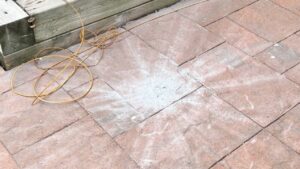NASA’s Dawn spacecraft is getting closer to Ceres and has photographs two mystery lights on it’s surface!
Fuzzy photos taken earlier spotted what looked like only one light, but recent photos now clearly show two bright spots in a crater.
Here is a better resolution edition, @FlashQuantum @elakdawalla #Dawn_Ceres http://t.co/TQZTPnuDek @NASA pic.twitter.com/XUHMtzEyIe
— NASA's Dawn Mission (@NASA_Dawn) February 25, 2015
Early thoughts suggest it could be ice reflecting sunlight, or evidence of volcanic activity on the surface, but as you can imagine, the strange lights have sparked suggestions that we are not alone! Are they proof of alien life? If so, what are they doing on Ceres?

What is Ceres?
Ceres is classed as a dwarf planet and is the largest object in the asteroid belt between Mars and Jupiter.

A cosmic mystery is unfolding millions of kilometers away as NASA’s spacecraft Dawn approaches the protoplanet Ceres. The most recent pictures taken by Dawn when it was 46,000 kilometers away from Ceres show two bright glowing spots next to each other. Earlier images with less resolution had shown only one bright spot.
“Ceres’ bright spot can now be seen to have a companion of lesser brightness, but apparently in the same basin. This may be pointing to a volcano-like origin of the spots, but we will have to wait for better resolution before we can make such geologic interpretations,” said Chris Russell, principal investigator for the Dawn mission, based at the University of California, Los Angeles

Source:
NASA: Ceres’ bright spot has a dimmer companion
Times of India: Cosmic mystery unfolds as protoplanet Ceres shows two bright spots
[divider]

Dawn was launched September 27, 2007 from Florida’s Cape Canaveral Air Force Station Launch Complex 17-B on a Delta II-Heavy rocket—the strongest rocket in the Delta II class. Its mission was to explore Vesta and the dwarf planet Ceres.
There are three principal scientific drivers behind Dawn’s mission objectives, these are:
First that it captures the earliest moments in the origin of the solar system enabling us to understand the conditions under which these objects formed.
Second, Dawn determines the nature of the building blocks from which the terrestrial planets formed, improving our understanding of this formation.
Finally, it contrasts the formation and evolution of two small planets that followed very different evolutionary paths so that we understand what controls that evolution.
Dawn orbited Vesta, the second largest object in the asteroid belt, from July 2011 until September 2012. The spacecraft’s ion propulsion system enabled it to spiral away from Vesta and towards its next destination, Ceres. At that point it will become the first spacecraft to go into orbit around two destinations in our solar system beyond Earth.
[divider]

Ceres (minor-planet designation 1 Ceres) is the largest object in the asteroid belt, which lies between the orbits of Mars and Jupiter.
It is composed of rock and ice, is 950 km (590 mi) in diameter, and contains approximately one third of the mass of the asteroid belt. It is the only dwarf planet in the inner Solar System.
It was the first asteroid to be discovered, on 1 January 1801 by Giuseppe Piazzi in Palermo, though at first it was considered to be a planet. (Wikipedia)











